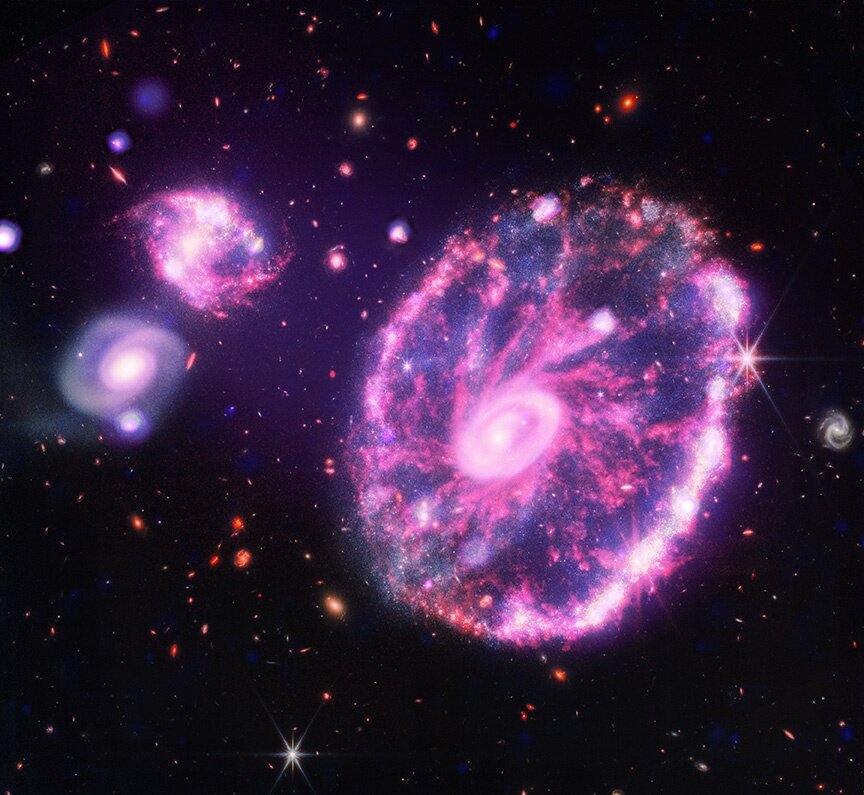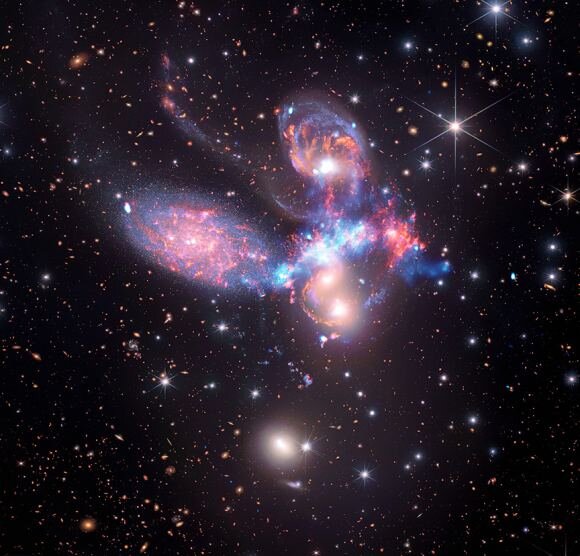 |
| A composite image showing x-ray radiation superimposed over an infrared image. Credit: NASA |
NASA scientists have released photos that combine early data from the James Webb Space Telescope with Chandra Observatory X-ray data. Aside from their beauty, the photographs provide insights into the inner workings of some of the universe's most complicated astrophysical occurrences. Light wavelengths give many types of information about the universe. Each new telescope that we send into space or install on the ground provides a fresh window into processes that we would not be able to see otherwise.
The James Webb Space Telescope, for example, is focused on infrared light. Warm things generate infrared light, which is great at traveling through gas clouds without being absorbed or dispersed. This enables astronomers to gaze into the cores of thick dust clouds, such as those that surround freshly formed stars. The Chandra C-ray Observatory is located at the other end of the energy spectrum. Some of the most intense occurrences in the universe, such as supernovae and pulsars, emit X-rays. The radiation from an X-ray teaches us about how these high-energy processes work.
When we blend different wavelengths, we get the greatest type of astronomy. NASA scientists recently revealed early-release photos from the James Webb Space Telescope and superimposed Chandra X-ray Observatory views of the same objects in the current example.
 |
| Stephan’s Quintet as seen by both Chandra and James Webb. Credit: NASA |
Although scientists have not yet mined the photographs and published their findings, we may already make some inferences. The X-ray radiation indicates were high energy processes are occurring, whereas the infrared radiation indicates where heated objects are hidden by dust clouds. The picture of Stephan's Quintet, for example, depicts five galaxies. A squiggly cloud sits over the two galaxies in the middle. This is a shockwave disclosed by Chandra that would not have been seen otherwise.
You may view the photo album for yourself by clicking here. While scientists continue to integrate data and uncover new insights, we may relax and enjoy the gorgeous photographs.



0 Comments